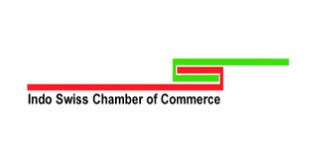SLX has launched Live Master Classes with deeper insights into sustainability, by industry experts. Enroll for the 45-minute session for free!

The certification course offers input from various experts from the industry. The course is validated globally with an industry-validated skills framework.

Do you want your job to be value-oriented? Or would you like your present job to shift focus towards meaning and value? Take this certification course and build what you are looking for!

The certification course will diversify your skillset. This will help you find better work opportunities in better companies!
The sessions will be delivered by world class faculty members with vast experience in the field of education and sustainability.
Our Certifications will help you integrate sustainable development processes and practices with ease into your deliverables & activities.
Our certification courses have comprehensive reference material on Sustainability, ESG, and many related topics.




Before we dive into what is single-use plastic and why we are all worried about the plastic problem, here are some hard facts to digest:
Single-use plastics, also known as disposable plastics, comprise polythene bags, plastic sachets, straws, food wrappers, etc. By nature, plastics are non-biodegradable. While they do not decompose into the soil, they do break down into tiny particles over a period of time. In the process not only do plastics release toxic chemicals, but they also enter our water bodies and food system causing a negative impact on health and environment.

The WEF summit this year witnessed the coming together of major advocates of climate change and sustainable development to share their views on single-use plastics.
Following are few of ways in which the cycle of single-use plastic can be broken:
For any policy to be sustainable and have a direct impact on the population as well as the environment, it is critical to adopt reforms at the grass-root level. Akira Sakano, Co-founder of Zero Waste Japan, emphasizes the involvement of the local business bodies in doing away with single-use plastic bags. She is a stronger preacher of the role of the local government bodies in designing solutions for single-use plastic.
Convenience to access and use has been hugely preferred by consumers over the past few years. But the fact is everything convenient cannot be sustainable as well. This explains why the present linear ‘take-make-dispose’ model of consumption has contributed significantly to the percentage of plastic waste globally. Most consumer goods companies follow this model of production. According to Tak Niinami (CEO, Suntory Holdings Ltd.), the move towards a circular economy is the best possible step towards rethinking how to deal with one-time-use plastic.
In a circular economy, materials flow around a closed-loop system, instead of being used once and then be discarded. The restorative and regenerative nature of the circular economy enables improved risk management of raw materials and an enhanced approach to the supply chain. At present, plastic waste accounts for close to USD 80-120 billion loss to the global economy. Switching from the linear model of production and consumption to a circular one is critical to meeting SDG 12 as well as SDG 14.

Read: Are You Eating Fish Or Plastic?
At present 91% of plastic is not being recycled. If the present trends continue, there will be 12 billion metric tons of plastic in landfills by 2025. This highlights the dire need for an efficient plastic recycling infrastructure.
The WEF summit called for investments for building infrastructure which will recycle plastic in a sustainable manner.
If You Liked This Blog and are Curious About Circular Economy and Sustainable Development Goals, Browse Our Courses